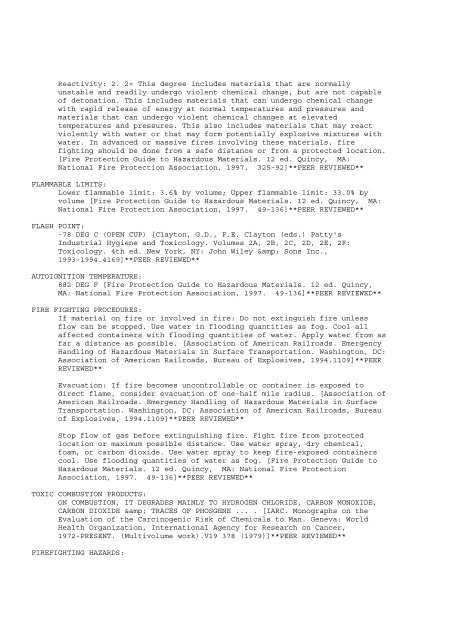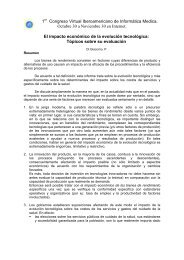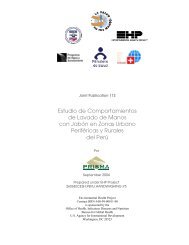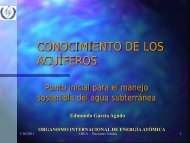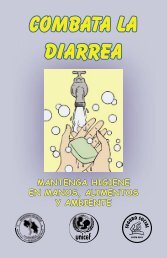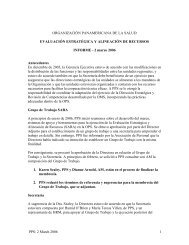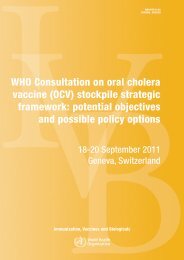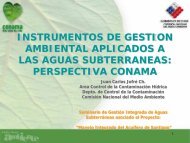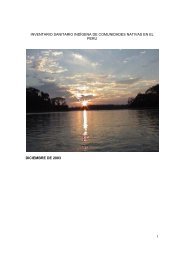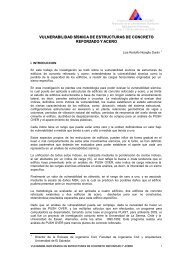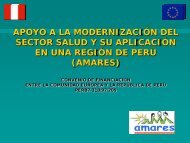a database of the National Library of M
a database of the National Library of M
a database of the National Library of M
Create successful ePaper yourself
Turn your PDF publications into a flip-book with our unique Google optimized e-Paper software.
Reactivity: 2. 2= This degree includes materials that are normallyunstable and readily undergo violent chemical change, but are not capable<strong>of</strong> detonation. This includes materials that can undergo chemical changewith rapid release <strong>of</strong> energy at normal temperatures and pressures andmaterials that can undergo violent chemical changes at elevatedtemperatures and pressures. This also includes materials that may reactviolently with water or that may form potentially explosive mixtures withwater. In advanced or massive fires involving <strong>the</strong>se materials, firefighting should be done from a safe distance or from a protected location.[Fire Protection Guide to Hazardous Materials. 12 ed. Quincy, MA:<strong>National</strong> Fire Protection Association, 1997. 325-92]**PEER REVIEWED**FLAMMABLE LIMITS:Lower flammable limit: 3.6% by volume; Upper flammable limit: 33.0% byvolume [Fire Protection Guide to Hazardous Materials. 12 ed. Quincy, MA:<strong>National</strong> Fire Protection Association, 1997. 49-136]**PEER REVIEWED**FLASH POINT:-78 DEG C (OPEN CUP) [Clayton, G.D., F.E. Clayton (eds.) Patty'sIndustrial Hygiene and Toxicology. Volumes 2A, 2B, 2C, 2D, 2E, 2F:Toxicology. 4th ed. New York, NY: John Wiley & Sons Inc.,1993-1994.4169]**PEER REVIEWED**AUTOIGNITION TEMPERATURE:882 DEG F [Fire Protection Guide to Hazardous Materials. 12 ed. Quincy,MA: <strong>National</strong> Fire Protection Association, 1997. 49-136]**PEER REVIEWED**FIRE FIGHTING PROCEDURES:If material on fire or involved in fire: Do not extinguish fire unlessflow can be stopped. Use water in flooding quantities as fog. Cool allaffected containers with flooding quantities <strong>of</strong> water. Apply water from asfar a distance as possible. [Association <strong>of</strong> American Railroads. EmergencyHandling <strong>of</strong> Hazardous Materials in Surface Transportation. Washington, DC:Association <strong>of</strong> American Railroads, Bureau <strong>of</strong> Explosives, 1994.1109]**PEERREVIEWED**Evacuation: If fire becomes uncontrollable or container is exposed todirect flame, consider evacuation <strong>of</strong> one-half mile radius. [Association <strong>of</strong>American Railroads. Emergency Handling <strong>of</strong> Hazardous Materials in SurfaceTransportation. Washington, DC: Association <strong>of</strong> American Railroads, Bureau<strong>of</strong> Explosives, 1994.1109]**PEER REVIEWED**Stop flow <strong>of</strong> gas before extinguishing fire. Fight fire from protectedlocation or maximum possible distance. Use water spray, dry chemical,foam, or carbon dioxide. Use water spray to keep fire-exposed containerscool. Use flooding quantities <strong>of</strong> water as fog. [Fire Protection Guide toHazardous Materials. 12 ed. Quincy, MA: <strong>National</strong> Fire ProtectionAssociation, 1997. 49-136]**PEER REVIEWED**TOXIC COMBUSTION PRODUCTS:ON COMBUSTION, IT DEGRADES MAINLY TO HYDROGEN CHLORIDE, CARBON MONOXIDE,CARBON DIOXIDE & TRACES OF PHOSGENE ... . [IARC. Monographs on <strong>the</strong>Evaluation <strong>of</strong> <strong>the</strong> Carcinogenic Risk <strong>of</strong> Chemicals to Man. Geneva: WorldHealth Organization, International Agency for Research on Cancer,1972-PRESENT. (Multivolume work).V19 378 (1979)]**PEER REVIEWED**FIREFIGHTING HAZARDS:


